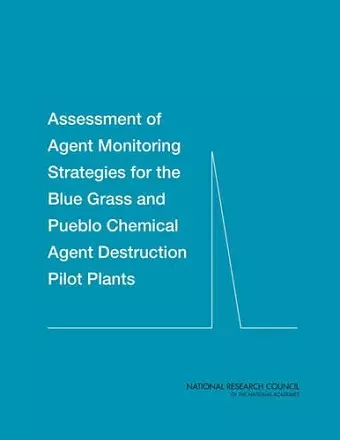Assessment of Agent Monitoring Strategies for the Blue Grass and Pueblo Chemical Agent Destruction Pilot Plants
National Research Council author Division on Engineering and Physical Sciences author Board on Army Science and Technology author Committee on Assessment of Agent Monitoring Strategies for the Blue Grass and Pueblo Chemical Agent Destruction Pilot Plants author
Format:Paperback
Publisher:National Academies Press
Published:21st Oct '12
Currently unavailable, our supplier has not provided us a restock date

January 2012 saw the completion of the U.S. Army's Chemical Materials Agency's (CMA's) task to destroy 90 percent of the nation's stockpile of chemical weapons. CMA completed destruction of the chemical agents and associated weapons deployed overseas, which were transported to Johnston Atoll, southwest of Hawaii, and demilitarized there. The remaining 10 percent of the nation's chemical weapons stockpile is stored at two continental U.S. depots, in Lexington, Kentucky, and Pueblo, Colorado. Their destruction has been assigned to a separate U.S. Army organization, the Assembled Chemical Weapons Alternatives (ACWA) Element.
ACWA is currently constructing the last two chemical weapons disposal facilities, the Pueblo and Blue Grass Chemical Agent Destruction Pilot Plants (denoted PCAPP and BGCAPP), with weapons destruction activities scheduled to start in 2015 and 2020, respectively. ACWA is charged with destroying the mustard agent stockpile at Pueblo and the nerve and mustard agent stockpile at Blue Grass without using the multiple incinerators and furnaces used at the five CMA demilitarization plants that dealt with assembled chemical weapons - munitions containing both chemical agents and explosive/propulsive components. The two ACWA demilitarization facilities are congressionally mandated to employ noncombustion-based chemical neutralization processes to destroy chemical agents.
In order to safely operate its disposal plants, CMA developed methods and procedures to monitor chemical agent contamination of both secondary waste materials and plant structural components. ACWA currently plans to adopt these methods and procedures for use at these facilities. The Assessment of Agent Monitoring Strategies for the Blue Grass and Pueblo Chemical Agent Destruction Pilot Plants report also develops and describes a half-dozen scenarios involving prospective ACWA secondary waste characterization, process equipment maintenance and changeover activities, and closure agent decontamination challenges, where direct, real-time agent contamination measurements on surfaces or in porous bulk materials might allow more efficient and possibly safer operations if suitable analytical technology is available and affordable.
Table of Contents- Front Matter
- Executive Summary
- 1 Introduction
- 2 BGCAPP and PCAPP Designs and Relevant Procedures Used at Destruction Facilities
- 3 Agent Monitoring Practices for Waste Generated at BGCAPP and PCAPP
- 4 Current Status of Surface Measurement Technologies and Potential ACWA Site Applications
- 5 Statistical Methods and Measurement
- 6 Report Summation and Recommendations
- References
- Appendix A: Biographical Sketches of Committee Members
- Appendix B: Committee Meetings
- Appendix C: Commercial Sources of Ambient Ionization Mass Spectrometry Instrumentation
- Appendix D: Statistical Calibration
- Appendix E:...
ISBN: 9780309259859
Dimensions: unknown
Weight: unknown
192 pages